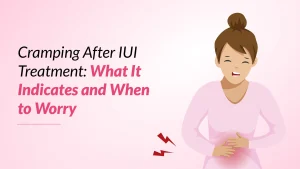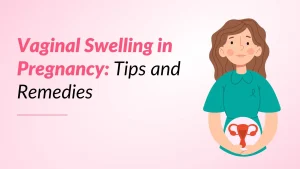What is elective Single Embryo Transfer (eSET)?
During an elective single-embryo transfer (eSET), a single high-quality embryo is transferred into the uterus or fallopian tube from a pool of available embryos. The embryo chosen for eSET may be from a recent fresh IVF procedure that produced many embryos or from a prior IVF cycle (such as cryopreserved embryos, frozen). The unused embryos might be cryopreserved or stored for later use.
Advancement in Embryo Selection and Better Culturing Techniques ( IVF and Cryopreservation)
In assisted reproductive technologies, frozen embryo transfer has grown in popularity and efficacy. Frozen embryo transfer, however, has been made possible by developments in cryopreservation procedures, which allow these embryos to be preserved for use in the future by freezing. Cryopreserved (frozen) embryos are later transferred to a woman’s uterus in this procedure. This procedure offers several advantages to individuals as well as healthcare professionals by enabling a more individualized and regulated approach to IVF.
The advantages of frozen embryo transfer are
- Improved embryo selection
- Increased success rate
- Reduced health risk
- Improved emotional and psychological health
How is the eSET Procedure Performed?
Elective single embryo transfer (eSET), which transfers a single high-quality embryo, has increased the rate of singleton pregnancy and dramatically decreased multiple gestation rates without reducing overall success rates.
The process is really simple and carries minimal risk. Embryologists will select the highest quality embryo from either a prior or fresh IVF cycle to transfer in a single embryo transfer. Next, the rest of the embryos are stored in a frozen state. The selected embryo can then be passed through a catheter that is inserted into the vagina. Ultrasonic imaging guides the whole procedure. The patient is instructed to relax and lie flat on her back for the next four to six hours after the procedure, after which the patient is discharged.
Suggested Read: What to Do Before and After Embryo Transfer?
What are the Benefits of Elective Single Embryo Transfer (eSET)?
The following are the health benefits of eSET for both mother and baby:
- Healthier newborn babies
- A lower risk for the mother
- Reduced rate of multiple pregnancies
- Cost-effective and financial savings for couples
- Increased success rates
Suggested Read: What to eat after embryo transfer IVF?
Healthier newborn babies
Premature delivery and low birth weight are two risks associated with multiple births. Multiple pregnancies have a great impact on newborn survival and well-being. These newborns may need special care shortly after birth, and they may have lifelong issues, including delays and developmental disabilities.
Compared to singletons, twins and triplets often have lower birth weights and are more likely to be prematurely delivered. As a result, choosing a SET procedure also raises the likelihood of having a healthy baby.
Reduced Rate of Multiple Pregnancies
There is a higher chance of multiple births when two or more embryos are transplanted. In actuality, having multiple births—twins or more—puts the mother and the babies at greater risk. Premature birth is frequently the result of multiple pregnancies. Premature birth puts a baby at risk for both severe acute and chronic health issues, including cerebral palsy, chronic lung and gastrointestinal issues, and even early mortality in the first few months of life.
Women who carry multiples may be more likely to require Caesarean sections, during and after delivery and require a longer recovery period.
A Lower Risk for Mothers
In mothers, the number of medical complications in a multiple pregnancy rises with each extra fetus. It includes a wide range of conditions, including diabetes, premature delivery, placental abnormalities, and preeclampsia. Pregnancy problems can be severe in some cases, and women over 35 are more likely to experience them. But in the case of single embryo transfer, the associated risk is drastically reduced due to single pregnancy, and hence, maternal health and stress can be taken care of.
Cost-effective and Financial Savings for Couples
Adopting SET, the most prevalent technique in assisted reproduction, can result in cost reductions without sacrificing the live birth rate (LBR). Research shows that, when compared to double-embryo transfer, single-embryo transfer was more cost-effective. Moreover, in addition to the substantial social and health expenditures, multiple pregnancies come with additional expenses and psychosocial concerns.
IVF Success Rates with eSET at Ferty9
At Ferty9 Fertility Centre, elective single embryo transfer (eSET) is combined with advanced lab protocols to ensure high success rates without increasing the risk of multiple pregnancies. For suitable candidates, especially women under 35 with good-quality embryos, IVF success rates with eSET can reach up to 60 to 70 percent, thanks to precision embryo selection and optimized transfer timing. This approach balances safety and effectiveness, offering a healthier pregnancy outcome without compromising on success.
Importance of Patient Counseling and Education
Up to 80% of patients want a multiple embryo transfer as their first choice despite the risks involved in multiple pregnancies and deliveries. The main reasons include not being aware of the risks involved, wanting to increase the likelihood of success, cutting down on the expense of ART, or hoping to have several births in a single pregnancy.
Furthermore, several counseling, health, and economic initiatives have proven to be successful in promoting single-embryo transfer (SET) procedures and lowering the number of multiple pregnancies, therefore guaranteeing adequate success rates.
Conclusion
Achieving gestation was the primary goal of assisted reproductive technology (ART) in its early years. Due to the poor success rates, double embryo transfers were frequently carried out, resulting in more number of multiple pregnancies than in naturally occurring conceptions. Compared to a singleton pregnancy, multiple pregnancies have a higher risk of challenges for both the mother and the baby. However, single-embryo transfer is now emerging as the best method for ART to produce a full-term, healthy baby with a high success rate.

